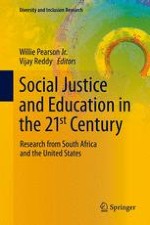2021 | OriginalPaper | Buchkapitel
A Holistic Model for Black Student Success in STEM: The Case for a Comprehensive and Holistic Approach in Building the Pipeline
verfasst von : J. H. Adams, D. Bright, J. Jackson, O. S. Simmons
Erschienen in: Social Justice and Education in the 21st Century
Verlag: Springer International Publishing
Aktivieren Sie unsere intelligente Suche, um passende Fachinhalte oder Patente zu finden.
Wählen Sie Textabschnitte aus um mit Künstlicher Intelligenz passenden Patente zu finden. powered by
Markieren Sie Textabschnitte, um KI-gestützt weitere passende Inhalte zu finden. powered by
